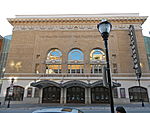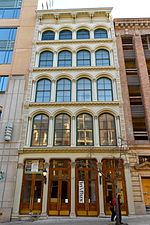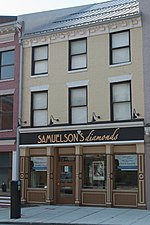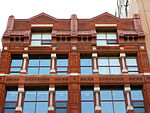Eutaw Street

Eutaw Street is a major street in Baltimore, Maryland, mostly within the downtown area. Outside of downtown, it is mostly known as Eutaw Place. The south end of Eutaw Street is at Oriole Park at Camden Yards. After this point, the street continues as a pedestrian walkway inside the stadium. A sign above this entrance is marked "Eutaw Street."Eutaw Street is famously known as the location of Lexington Market.The north end of Eutaw Street is at Dolphin Street. The street continues past this point under the name Eutaw Place through the communities of Bolton Hill and Reservoir Hill, and ends at Druid Park Lake Drive. Eutaw Street is prefixed with North or South depending on whether it is north or south of Baltimore Street. Eutaw Place does not have such a directional designation.Eutaw Place was called Gibson Street until 1853. This area was known as a home to the wealthy, particularly the affluent German-Jewish community of Baltimore.The Baltimore Metro Subway runs below a large part of Eutaw Street. Two of its stations, State Center and Lexington Market, are located along Eutaw Street.
Excerpt from the Wikipedia article Eutaw Street (License: CC BY-SA 3.0, Authors, Images).Eutaw Street
West Baltimore Street, Baltimore Downtown
Geographical coordinates (GPS) Address Nearby Places Show on map
Geographical coordinates (GPS)
| Latitude | Longitude |
|---|---|
| N 39.289316666667 ° | E -76.620930555556 ° |
Address
Medusa
West Baltimore Street 401
21201 Baltimore, Downtown
Maryland, United States
Open on Google Maps









